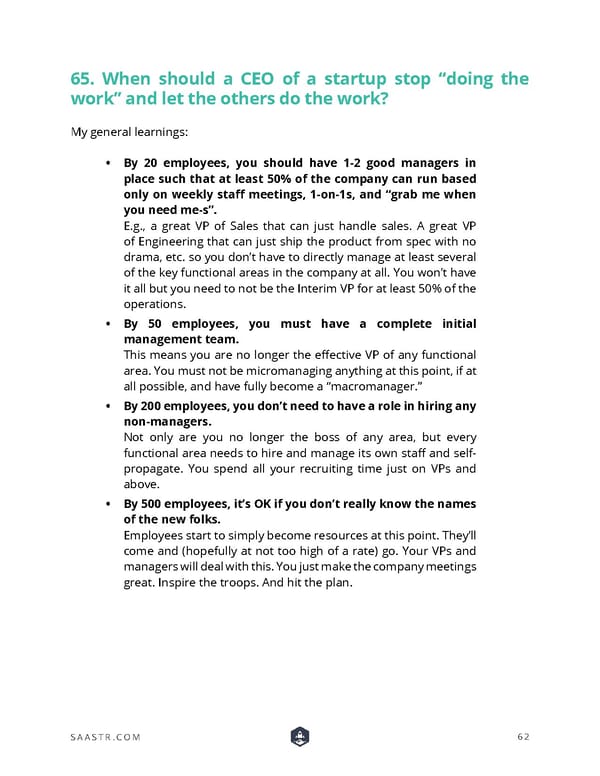65. When should a CEO of a startup stop “doing the work” and let the others do the work? My general learnings: • By 20 employees, you should have 1-2 good managers in place such that at least 50% of the company can run based only on weekly staff meetings, 1-on-1s, and “grab me when you need me-s”. E.g., a great VP of Sales that can just handle sales. A great VP of Engineering that can just ship the product from spec with no drama, etc. so you don’t have to directly manage at least several of the key functional areas in the company at all. You won’t have it all but you need to not be the Interim VP for at least 50% of the operations. • By 50 employees, you must have a complete initial management team. This means you are no longer the effective VP of any functional area. You must not be micromanaging anything at this point, if at all possible, and have fully become a “macromanager.” • By 200 employees, you don’t need to have a role in hiring any non-managers. Not only are you no longer the boss of any area, but every functional area needs to hire and manage its own staff and self- propagate. You spend all your recruiting time just on VPs and above. • By 500 employees, it’s OK if you don’t really know the names of the new folks. Employees start to simply become resources at this point. They’ll come and (hopefully at not too high of a rate) go. Your VPs and managers will deal with this. You just make the company meetings great. Inspire the troops. And hit the plan. SAASTR.COM 62
 The Ultimate Guide For Scaling Sales & Raising Capital Page 65 Page 67
The Ultimate Guide For Scaling Sales & Raising Capital Page 65 Page 67